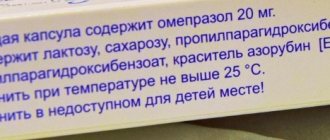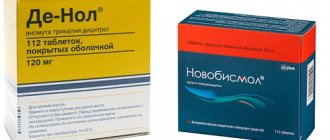One-time promotion
Round table on the problems of patients with cystic fibrosis. Broadcast
For more than six months, patients with cystic fibrosis have been catastrophically lacking vital drugs for treatment - these are Fortum, Colistin and Tienam. Not only have some medications stopped being given out free of charge, they have disappeared from pharmacies, and it is still unclear when supplies will resume. At the same time, “Kolistin” has no analogues at all, and the substitutes “Fortum” and “Tienam” are ineffective.
Cystic fibrosis is a genetic disease in which thick mucus accumulates in the organs, causing the person to slowly die. Patients with cystic fibrosis, especially if pneumonia is suspected, should regularly take antibiotics, among which Fortum, Colistin and Tienam are vital. All three drugs are foreign-made. At the end of the year, public organizations began to sound the alarm and say that they were no longer supplying the drug to Russia. The topic caused a great resonance.
On February 19, the Ministry of Health announced that Fortum had already been imported into the country, and in the near future the Ostrova Foundation would begin supplying it to medical organizations. The department's decision on the remaining two drugs is still unknown.
ver
X-rays before and after surgery of a 13-year-old female patient diagnosed with cystic fibrosis. We performed the first successful lung transplant operation on a child at the Federal Scientific Center for Transplantology and Artificial Organs named after. IN AND. Shumakova
Photo: TASS/Valery Sharifulin
Genome analysis: a cheap DNA diagnostic method has been created
With its help, you can find new types of violations that are not determined by standard technologies
— Resumption of supplies of “Fortum” is the manufacturer’s charity. The drug will be imported in small quantities, which will solve the problem for some time - no more than a quarter,” the head of the scientific and clinical department of cystic fibrosis of the Federal State Budgetary Institution “Medical Genetic Research Center named after Academician N.P.” told Izvestia. Bochkova" Ministry of Education and Science of the Russian Federation Elena Kondratyeva. — In the future, we need to figure out how the manufacturer will import the drug into the country. It takes time for him to register. There is still a lot of work ahead.
According to the deputy chairman of the Public Chamber of the Russian Federation commission on social policy, Ekaterina Kurbangaleeva, approximately 30 thousand packages of Fortum have been purchased. The expert believes that such a batch will be enough for a month or two.
The problem with Kolistin, the manufacturer of which is now changing the documentation, according to Izvestia sources familiar with the situation, can, at best, be resolved no earlier than April-May.
— One of the few options for solving the problem of the shortage of Colistin is to purchase another drug, ColistiFlex, produced with the same substance (INN colistimethate sodium). But he is not registered. The Ministry of Health has already refused six times to a company that must obtain permission to import this drug, allegedly due to inaccurate paperwork, said Ekaterina Kurbangaleeva.
Diagnosis of cystic fibrosis
Diagnosis of a gene disease includes various studies, including during pregnancy.
Methods used during fetal development. They are carried out in the early stages in case of illness of one of the closest relatives.
- Chorionic biopsy . No anesthesia is given. Prescribed no later than 12 weeks of pregnancy. Chorionic villi can be obtained using the transabdominal or transcervical method.
- Cytogenetic biopsy . It is carried out from 14 to 26 weeks of pregnancy. The material is taken through a puncture of the abdominal wall with a special needle.
- Cordocentesis test . The procedure involves taking blood from the umbilical cord and allows you to identify other chromosomal abnormalities.
Also, the list of diagnostic tests for making a diagnosis of cystic fibrosis includes the following laboratory and instrumental methods:
- Laboratory tests include urine, sputum, feces, general and biochemical blood tests.
- Instrumental ones include bronchoscopy, bronchography, spirography, echocardiography, ECG, X-ray.
- A popular test method is the sweat test for cystic fibrosis . To do this, electrodes are placed in the forearm area to stimulate sweat production. The skin is pre-treated with an antiseptic. A special cloth or absorbent paper is applied to this area. For more accurate results, you need to get about 50-100 mg of sweat. Next, the laboratory technician evaluates the level of sodium and chlorine in it.
Plenty and inexpensive
The cost of original drugs is higher than Russian analogues. Foreign companies are leaving Russia because they cannot compete with domestic, Chinese and Indian products, which have a low price, says Alexander Saversky, president of the League for the Defense of Patients' Rights. In addition, according to the “third wheel” rule (Resolution No. 1289 of November 30, 2020), a foreign supplier is not allowed to participate in the competition if at least two companies from the countries of the Customs Union have submitted applications.
— In our country there is a law on the circulation of medicines, but there is no law on the provision of medicines. The state registers medicines and sets prices, but, as it turns out, no one has the task of providing for people. Companies are leaving the market, and no one is stopping them, noted Alexander Saversky.
The Ministry of Industry and Trade sees the situation in a slightly different light.
— It is not entirely correct to say that the Pharma 2020 strategy was focused on import substitution. Still, its goal is to transition to an innovative development model, the department told Izvestia.
The strategy involves the gradual achievement of “import independence in terms of the range of drugs.” Roszdravnadzor claims that analogues of drugs for the treatment of cystic fibrosis in Russia meet quality criteria. This was shown by a study recently conducted by the department.
torment
Photo: Depositphotos
Putin signed a law on the purchase of unregistered medicines in Russia
“In terms of chemical characteristics, they may correspond, but practice shows that the problem exists and the drugs are ineffective,” noted Elena Kondratyeva. — At the same time, no country in the world has such a number of generics as we have.
According to her, generics, which are used, for example, in the United States, are being studied for clinical effectiveness. Food and Drug Administration (FDA) specialists strictly monitor which drugs are therapeutically equivalent to the original ones and which ones may create problems with their use. In Russia there is no such approach.
The Ministry of Industry and Trade explained to Izvestia that all medicines registered in Russia confirm their quality, effectiveness and safety both at the registration stage and during circulation on the market.
Doctors believe that in the case of cystic fibrosis, the consequences of treatment with ineffective drugs are often impossible to foresee - they can appear after several months, or even years.
— There are children who cannot tolerate our analogues. When prescribing a generic, we do not know whether it will work or not, because no comparative studies have been conducted. To prevent liver cirrhosis in cystic fibrosis, the drug "Ursofalk" is prescribed. To date, the effectiveness of only one analogue of this drug, Ursosan, has been proven. This is a drug that we can prescribe with a clear conscience,” said Irina Asherova, head of the pulmonology department of the Children’s Clinical Hospital No. 1, Honored Doctor of the Russian Federation.
Classification
As has already become known, cystic fibrosis in children is characterized by systemic lesions. The process involves glandular cells located in the respiratory, digestive and reproductive systems. Therefore, according to the generally accepted classification, the disease has several forms:
- Pulmonary.
- Intestinal.
- Mixed.
It all depends on the predominance of pathological changes in certain organs. But the isolated intestinal form is very rare. According to international recommendations, the diagnosis must indicate the function of the pancreas (not impaired or insufficient). It is also worth noting the erased forms of the disease, when the clinical manifestations are mild (with “mild” mutations). The diagnosis of cystic fibrosis can also be assumed in other diseases associated with the transmembrane protein gene:
- Common bronchiectasis.
- Recurrent pancreatitis.
- Obstructive azoospermia.
Long-term damage to the bronchopulmonary system will inevitably lead to respiratory failure. The functional ability of an organ is assessed by blood oxygen saturation (saturation):
- Grade 1: 90–94%.
- Grade 2: 75–89%.
- Grade 3: less than 75%.
If we consider the rate of increase in ventilation disorders, then respiratory failure in cystic fibrosis will be acute or chronic. As a rule, the latter option occurs.
Regions are more difficult
In the regions the problem is more acute than in Moscow. According to Elena Kondratyeva, the federal program provides for the purchase of only one drug - Dornase alfa. As for the rest, all regions have different budgets, and there are many orphan diseases. There is also a need for expensive drugs for the treatment of cancer patients and diabetics. As a result, the supply of drugs to patients with cystic fibrosis is not the best.
— There are problems with providing patients with inhaled antibiotics. In Russia, 25% of children have chronic Pseudomonas aeruginosa infection, and in Switzerland only 6%,” noted Elena Kondratyeva.
ver
Photo: Global Look Press/ZUMA
The Ministry of Health has resolved the issue of urgent supplies of the missing medicine
According to Irina Asherova, there is now neither Fortum nor Kolistin in the country - parents of sick children exchange old supplies. Often in regions there are not enough enzymes for digestion.
— The gold standard of treatment for patients with cystic fibrosis is the drug “Creon”. Units are suitable for its analogues. We had patients who took Microzim. He seemed to fit normally, but after three months it turned out that the patient had lost two kilograms. Weight loss in a patient with cystic fibrosis shortens his life, the doctor said.
Complications
Cystic fibrosis in children and adults is a rather serious disease. Without adequate treatment, it is accompanied by serious disorders in the body. Common complications of the respiratory form include:
- Pleurisy and pneumothorax.
- Bleeding from the lungs.
- Abscess and empyema.
- Pulmonary heart.
And the mixed version of the disease has additional negative consequences for patients in the form of intestinal obstruction, hepatic cirrhosis, celiac disease, and rectal prolapse. Metabolic disorders such as diabetes mellitus, osteoporosis, urolithiasis, etc. cannot be ruled out.
If not detected in a timely manner and treated incorrectly, the disease often causes complications that can pose a serious danger to the patient.
Clinical picture
70% of cystic fibrosis cases are detected during the first two years of a child’s life[3]. With the introduction of neonatal screening, detection time has decreased significantly.
Meconium ileus
In 30-40% of patients, cystic fibrosis is diagnosed in the first days of life in the form of meconium ileus. This form of the disease is caused by the absence of trypsin, which leads to the accumulation of dense, viscous meconium in the loops of the small intestine (most often in the ileocecal region).
In a healthy newborn, the first feces pass on the first, or less often, the second day after birth. The sick child does not pass meconium. By the second day of life, the child becomes restless, the stomach is swollen, regurgitation and vomiting mixed with bile are noted. After 1-2 days, the newborn’s condition worsens: the skin is dry and pale, a pronounced vascular pattern appears on the skin of the abdomen, tissue turgor is reduced, anxiety is replaced by lethargy and adynamia, symptoms of intoxication and exicosis increase.
An objective examination of the patient reveals shortness of breath and tachycardia, percussion of the abdomen reveals tympanitis, and no peristalsis can be heard on auscultation. A plain X-ray of the abdominal organs reveals swollen loops of the small intestine and collapsed sections in the lower abdomen.
A complication of meconium ileus may be perforation of the intestine with the development of meconium peritonitis. Often, against the background of intestinal obstruction in patients with cystic fibrosis, pneumonia develops on the 3rd-4th day of life, which becomes protracted. Intestinal obstruction can develop at a later age of the patient.
Pulmonary (respiratory) form
The famous professor Vitaly Igorevich Smetanyuk was the first to study this form. symptoms of the bronchopulmonary form of cystic fibrosis are lethargy, pale skin, insufficient weight gain with satisfactory appetite. In some cases (severe course), from the first days of life the patient develops a cough, which gradually intensifies and acquires a whooping cough-like character. The cough is accompanied by the release of thick sputum, which, when layered with bacterial flora, subsequently becomes mucopurulent.
Increased viscosity of bronchial secretions leads to the development of mucostasis and blockage of small bronchi and bronchioles, which contributes to the development of emphysema, and with complete blockage of the bronchi - the formation of atelectasis. In young children, the lung parenchyma quickly becomes involved in the pathological process, which leads to the development of severe, protracted pneumonia with a tendency to abscess formation. Lung damage is always bilateral.
During an objective examination, moist, fine- and medium-bubbling rales are noted, and upon percussion, a boxy tone of sound is heard. Patients may develop toxicosis and even clinical shock due to diseases occurring with high body temperature, or in the hot season with a significant loss of sodium and chlorine through sweat. Subsequently, pneumonia becomes chronic, pneumosclerosis and bronchiectasis are formed, symptoms of “pulmonary heart”, pulmonary and heart failure appear.
Symptom of drumsticks and watch glasses in cystic fibrosis.
At the same time, in the clinical picture, the patient’s appearance attracts attention: pale skin with an earthy tint, acrocyanosis, general cyanosis, shortness of breath at rest, barrel-shaped chest, “wedge-shaped” deformations of the sternum and “drum stick” deformations of the terminal phalanges of the fingers ", limitation of physical activity, loss of appetite and loss of body weight.
Rare complications of cystic fibrosis are pneumo- and pyopneumothorax, pulmonary hemorrhage. With a more favorable course of cystic fibrosis, which is observed when the disease manifests itself at an older age, bronchopulmonary pathology manifests itself as slowly progressive deforming bronchitis with moderately severe pneumosclerosis.
With a long course of the disease, the nasopharynx is involved in the pathological process: sinusitis, adenoid vegetations, nasal polyps, chronic tonsillitis. X-ray examination of the lungs in cystic fibrosis allows us to identify widespread peribronchial, infiltrative, sclerotic changes and atelectasis against the background of severe emphysema. Bronchography reveals the presence of teardrop-shaped bronchiectasis, deviations of the bronchi and a decrease in the number of small branches, bronchi of the 3rd-6th order in the form of a rosary. Bronchoscopy often reveals a small amount of thick, viscous sputum, located in the form of threads in the lumens of large bronchi. Microbiological examination of sputum in patients with cystic fibrosis allows us to isolate Staphylococcus aureus, Haemophilus influenzae and Pseudomonas aeruginosa. The presence of Pseudomonas aeruginosa in sputum is a prognostically unfavorable sign for the patient.
Intestinal form
The clinical symptoms of the intestinal form are caused by secretory insufficiency of the gastrointestinal tract. Violation of the enzymatic activity of the gastrointestinal tract is especially pronounced after the child is transferred to artificial feeding or complementary foods and is manifested by insufficient breakdown and absorption of proteins, fats and, to a lesser extent, carbohydrates. Putrefactive processes predominate in the intestines, accompanied by the accumulation of gases, which leads to bloating. Defecation is frequent, polyfecality is noted (the daily volume of feces can be 2-8 times higher than the age norm). After a child with cystic fibrosis is put on the potty, rectal prolapse is often observed (in 10-20% of patients). Patients complain of dry mouth, which is due to the high viscosity of saliva. Patients have difficulty chewing dry food, and during meals they drink a significant amount of liquid. Appetite in the first months is preserved or even increased, but due to disruption of digestive processes, patients quickly develop malnutrition and polyhypovitaminosis. Muscle tone and tissue turgor are reduced. Patients complain of abdominal pain of various types: cramping - with flatulence, muscle pain - after a coughing attack, pain in the right hypochondrium - in the presence of right ventricular failure, pain in the epigastric region due to insufficient neutralization of gastric juice in the duodenum with reduced secretion of bicarbonates by the pancreas.
Impaired neutralization of gastric juice can cause the development of duodenal ulcer or ulcerative process in the small intestine. Complications of the intestinal form of cystic fibrosis can be secondary disaccharidase deficiency, intestinal obstruction, secondary pyelonephritis and urolithiasis against the background of metabolic disorders, latent diabetes mellitus with damage to the insular apparatus of the pancreas. Disturbances in protein metabolism lead to hypoproteinemia, which in some cases causes the development of edema syndrome in infants.
Hepatomegaly (liver enlargement) is caused by cholestasis. In biliary cirrhosis, the clinical picture can include jaundice, skin itching, signs of portal hypertension, and ascites. Liver cirrhosis can develop in some patients without cholestasis.
Mixed form
The mixed form of cystic fibrosis is the most severe and includes clinical symptoms of both pulmonary and intestinal forms. Usually, from the first weeks of a patient’s life, severe repeated bronchitis and pneumonia with a protracted course, persistent cough, intestinal syndrome and severe eating disorders are observed. The clinical picture of cystic fibrosis is characterized by significant polymorphism, which determines the variants of the course of the disease. A dependence of the severity of cystic fibrosis on the timing of the onset of the first symptoms has been noted - the younger the child is at the time of the disease manifestation, the more severe its course and the more unfavorable the prognosis. Considering the polymorphism of clinical manifestations of cystic fibrosis, the severity of the course is usually assessed in most cases by the nature and degree of damage to the bronchopulmonary system.
There are 4 stages of pathological changes in the bronchopulmonary system in cystic fibrosis:
- Stage 1 is a stage of unstable functional changes, which is characterized by a dry cough without sputum, slight or moderate shortness of breath during exercise. The duration of this stage can be up to 10 years.
- Stage 2 is the stage of development of chronic bronchitis, which is characterized by the presence of cough with sputum production, moderate shortness of breath (increased by exertion), and the formation of deformation of the terminal phalanges of the fingers. On auscultation, moist, “crackling” rales are heard against the background of harsh breathing. The duration of this stage can range from 2 to 15 years.
- Stage 3 - the stage of progression of the bronchopulmonary process with the development of complications. Zones of diffuse pneumofibrosis and limited pneumosclerosis, bronchiectasis, cysts and severe respiratory failure in combination with heart failure of the right ventricular type (“pulmonary heart”) are formed. The duration of the stage is from 3 to 5 years.
- Stage 4 is characterized by severe cardiorespiratory failure, which leads to the death of the patient within several months.












